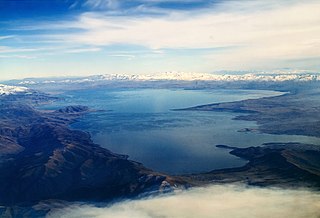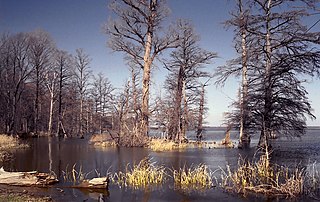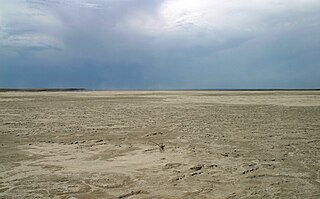| Lake Isom National Wildlife Refuge | |
|---|---|
IUCN category IV (habitat/species management area) | |
Map of the United States | |
| Location | Lake County, Tennessee, United States |
| Nearest city | Tiptonville, Tennessee |
| Coordinates | 36°17′59″N89°25′09″W / 36.2997°N 89.4192°W Coordinates: 36°17′59″N89°25′09″W / 36.2997°N 89.4192°W |
| Area | 1,846 acres (7.47 km2) |
| Established | 1938 |
| Governing body | U.S. Fish and Wildlife Service |
| Website | Lake Isom National Wildlife Refuge |
Lake Isom is a small natural lake located in Lake County, Tennessee immediately south of Reelfoot Lake. It is fed by Running Reelfoot Bayou, the outlet stream of Reelfoot Lake. Like Reelfoot, it was formed in the 1811–12 New Madrid earthquakes and it is very shallow and swampy. The entire lake and its environs, covering 1,846 acres (747 ha) comprise the Lake Isom National Wildlife Refuge and have been such since 1938.

A lake is an area filled with water, localized in a basin, that is surrounded by land, apart from any river or other outlet that serves to feed or drain the lake. Lakes lie on land and are not part of the ocean, and therefore are distinct from lagoons, and are also larger and deeper than ponds, though there are no official or scientific definitions. Lakes can be contrasted with rivers or streams, which are usually flowing. Most lakes are fed and drained by rivers and streams.

Lake County is a county located in the northwest corner of the U.S. state of Tennessee. As of the 2010 census, the population was 7,832, making it the fifth-least populous county in Tennessee. Its county seat is Tiptonville. It shares a border with Kentucky to the north and is separated from Missouri to the west by the Mississippi River.

Reelfoot Lake is a shallow natural lake located in the northwest portion of U.S. state of Tennessee, in Lake and Obion counties. Much of it is really more of a swamp, with bayou-like ditches connecting more open bodies of water called basins, the largest of which is called Blue Basin. Reelfoot Lake is noted for its bald cypress trees and its nesting pairs of bald eagles.
Lake Isom has suffered from considerable siltation in the past, making it even shallower and swampier than it already was. Improved agricultural practices in the area are slowing this development, however.
Silt is granular material of a size between sand and clay, whose mineral origin is quartz and feldspar. Silt may occur as a soil or as sediment mixed in suspension with water and soil in a body of water such as a river. It may also exist as soil deposited at the bottom of a water body, like mudflows from landslides. Silt has a moderate specific area with a typically non-sticky, plastic feel. Silt usually has a floury feel when dry, and a slippery feel when wet. Silt can be visually observed with a hand lens, exhibiting a sparkly appearance. It also can be felt by the tongue as granular when placed on the front teeth.

Agriculture is the science and art of cultivating plants and livestock. Agriculture was the key development in the rise of sedentary human civilization, whereby farming of domesticated species created food surpluses that enabled people to live in cities. The history of agriculture began thousands of years ago. After gathering wild grains beginning at least 105,000 years ago, nascent farmers began to plant them around 11,500 years ago. Pigs, sheep and cattle were domesticated over 10,000 years ago. Plants were independently cultivated in at least 11 regions of the world. Industrial agriculture based on large-scale monoculture in the twentieth century came to dominate agricultural output, though about 2 billion people still depended on subsistence agriculture into the twenty-first.
Due to the long-term federal ownership and its smaller size, Lake Isom is almost entirely undeveloped and is not surrounded with parks, restaurants, and hunting and fishing camps as is Reelfoot. Motors on boats on the lake are also limited to 10 horsepower.













